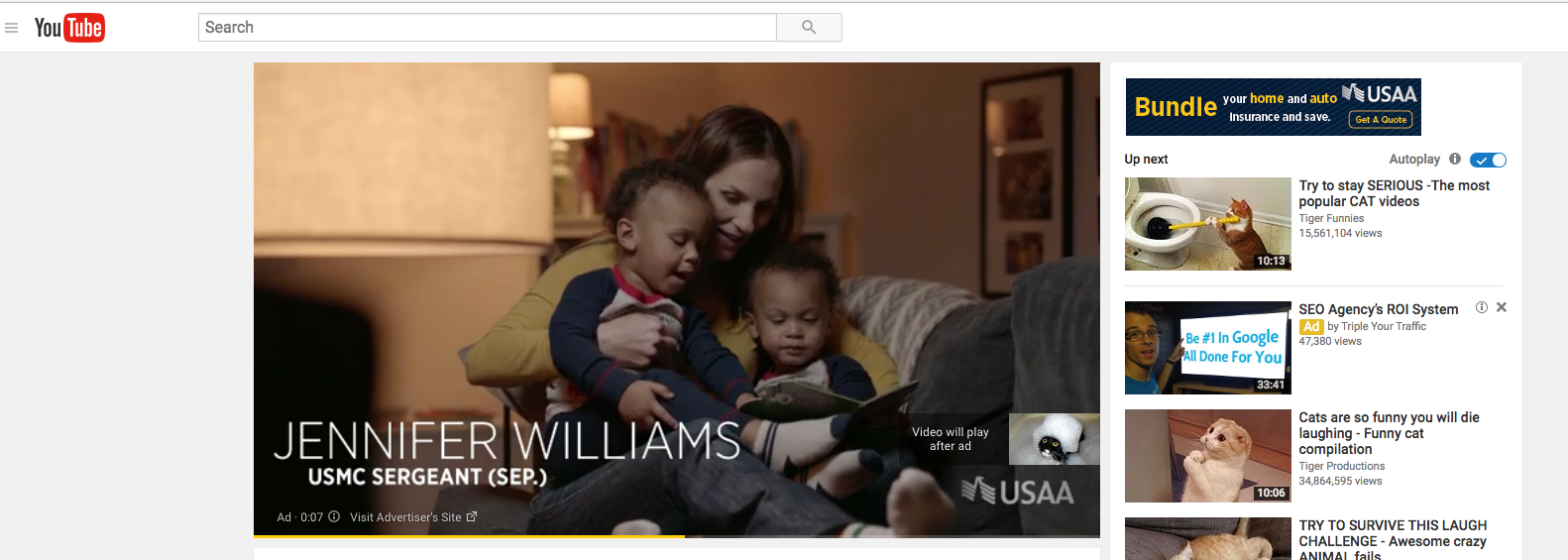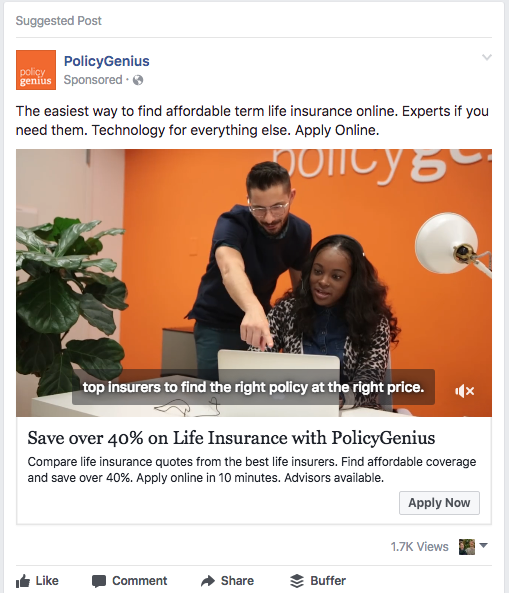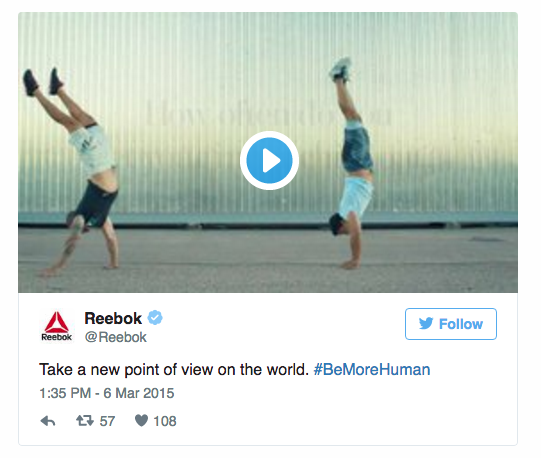May 20, 2024
Five Ways to Use Video in Online Advertising
By Megalytic Staff - May 26, 2017

TrueView In-Stream Video (YouTube)
In-Stream videos are probably the first category that you think of when considering YouTube ads. These are set up via AdWords, and play primarily as pre-roll ads before the main videos people are watching, with the option to skip after 5 seconds if the ad is 30 seconds or longer. Ads contain a link to your site and can be targeted several ways:
- Keywords (contextual targeting): showing up before videos relevant to certain terms (for instance, targeting the keyword “horse riding” might show an ad for saddles before a video beginner’s guide to riding)
- Placements: targeting select videos or channels
- Topics: targeting videos that fit in general topic categories defined by AdWords (e.g., Home & Garden)
- Interests: targeting people based on internet behavior, including in-market purchase intent (auto insurance) or general affinity (video gaming)
When using the In-Stream format, keep in mind that the average user won’t want to watch a lengthy ad before seeing their favorite cat video . Don’t run your 3-minute long service overview video as an ad in this format, since most people will skip as soon as they have a chance. Instead, use a brief 15 second ad to get a message across in an unskippable format.
You can also run a slightly longer video (30 seconds to a minute--not too long!) but if you choose a longer format, be sure to present your brand or promotion clearly in the first few seconds before the user is permitted to skip. Since you don’t have to pay when the video is skipped before 30 seconds, you essentially get free branding for the period of time it is played.
Also, be sure to include a companion banner, a 300x60 image that displays to the right of the video ad. This extra graphic allows you to clearly communicate a call-to-action associated with your video, driving users to click to your site.
YouTube also offers Video Discovery ads, which allow you to promote videos in search results and alongside other videos. However, at the time of writing, this ad format is on hold due to AdWords investigating brand safety issues. These are slated to be back up and running by the end of Q2 2017 with safeguards in place to ensure that ads don’t show up next to objectionable content.
Bumper Ads
Google AdWords also offers an option for 6-second, unskippable, bumper ads on YouTube. However these are billed on a CPM (cost per thousand impressions) basis, instead of per view. This format allows you to put an extremely brief message in front of users without requiring any action on their part, creating brand awareness for you while still allowing users to quickly get to their intended videos. You can also use companion banners with bumper ads to drive people to a website.
TrueView for Shopping
If you’re promoting an ecommerce site on YouTube, you can drive purchasers directly from videos by featuring products right alongside videos. This placement is highly visual, with imagery of products and pricing provided within the ads. For example, you could show blenders next to a video about making smoothies.
However, this format requires that you have a Google Merchant Center account configured with a product feed from your site. For more details, see Google’s walkthrough on creating a TrueView for a shopping campaign . But if you sell products on your website, it’s likely well worth the time to set up this account.
Facebook Video
Facebook has become a prominent medium for video consumption. Research indicates that users find posts with video more engaging, and Facebook’s News Feed algorithm tends to have a bias toward showing videos. As people scroll through their feeds, they’ll see videos begin to play automatically.
In turn, the advertising platform allows you to promote videos at just a few cents a view, with options to target on an incredibly granular level . You can also promote standard posts containing video, including a link to a landing page to promote an offer.
When running video ads on Facebook, note that 85% of views occur without sound turned on . Design videos in a format that’s visually appealing and understandable, even while running silently. Since you can’t get viewers’ attention with sound, the beginning of the video should be more than just a basic slate of text and include enough action to grab people’s attention. For instance, consider recipe videos that walk through step-by-step creation of dishes with text for each step. Also, take advantage of Facebook’s option to automatically create subtitles; you can also upload your own subtitles for greater accuracy.
Other new features to note include options to advertise within Facebook and Instagram stories directly from the Facebook Ads Manager interface. These ads can reach users “in the moment” of experiencing their connections’ lives.
Twitter Video
Twitter also allows you to promote video ads on a platform that people often turn to for real-time news and updates. As with Facebook, you can drive awareness at just a few cents per view. In addition to standard audience interest targeting, Twitter offers a few unique options for precise targeting, including keywords (target people tweeting about a particular event, topic, or hashtag) and profiles (target people similar to those who follow select brands). Along with a video, you can include a call-to-action linking users to a website.
For more, see Twitter’s guide to creating a Video Views campaign .
Conclusion
If you have video assets to promote online, take advantage of the many channels for promoting videos and ultimately driving people to complete actions. Get specific with targeting to reach people based on what they are already watching or tweeting about. Test different formats and video lengths to see what drives the best response. Ultimately, use video in conjunction with other forms of online marketing, such as paid search, SEO and email marketing, to complete a full-circle digital strategy.



